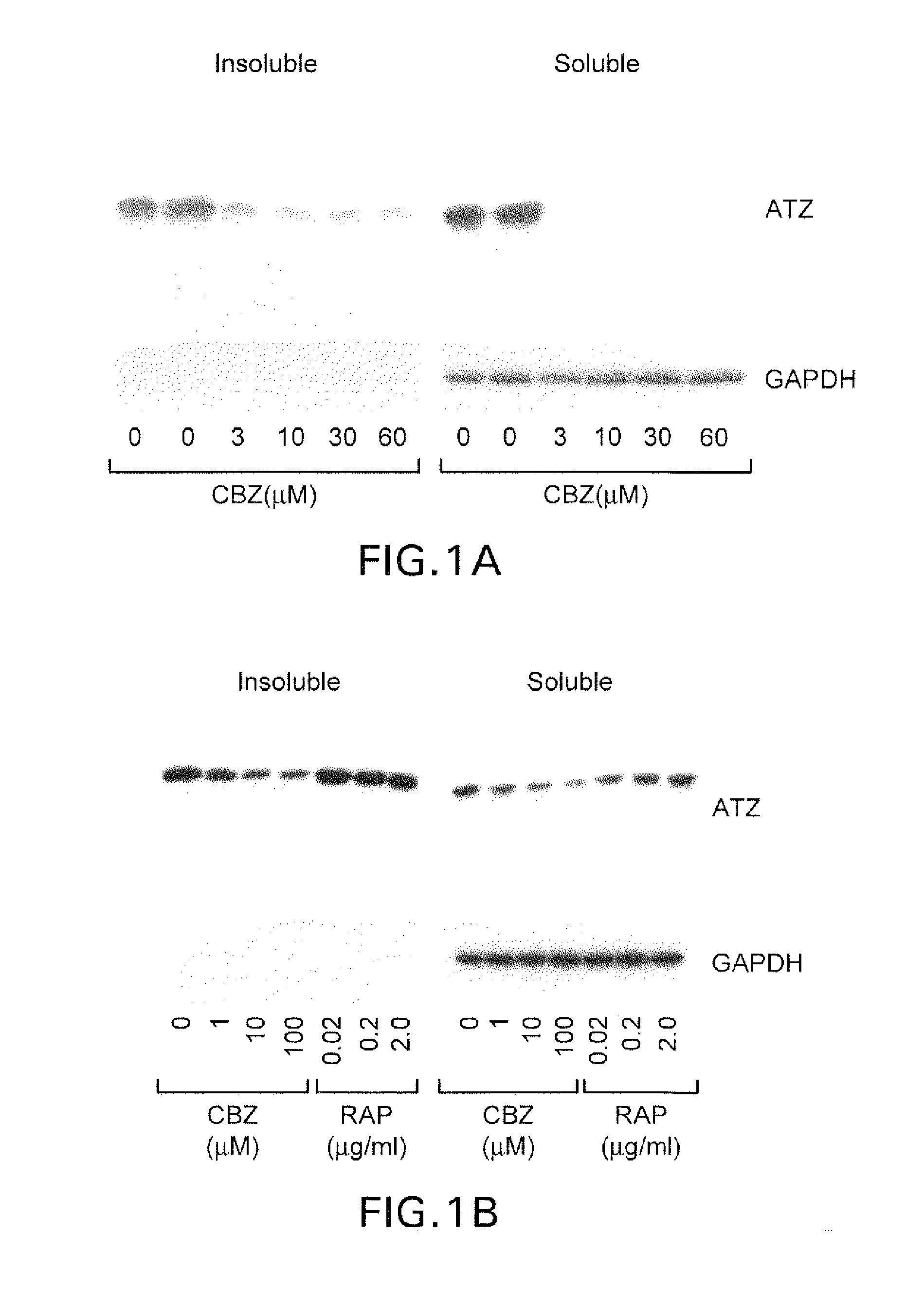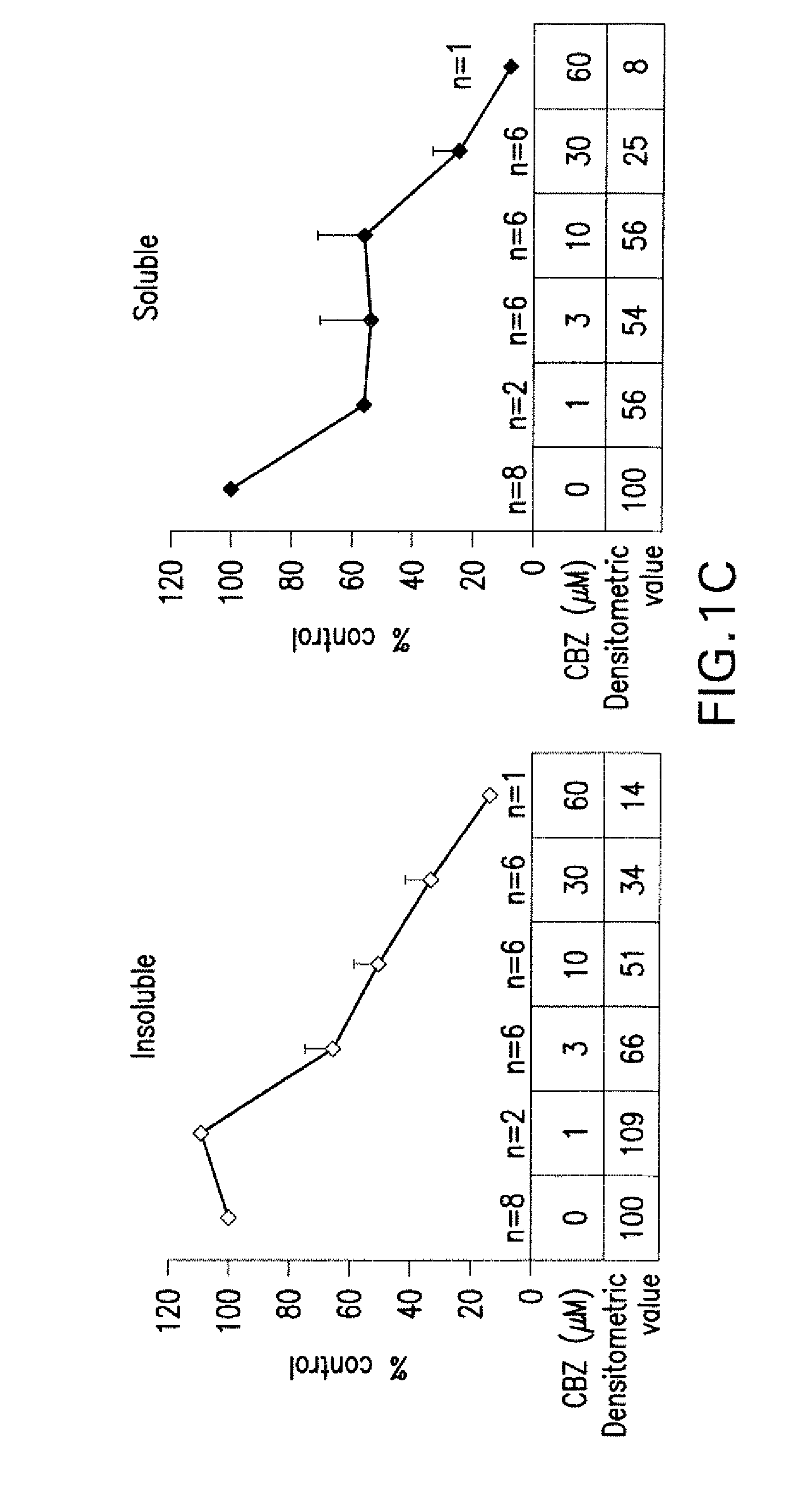Methods of treating disorders associated with protein polymerization
a protein polymerization and disorder technology, applied in the field of protein polymerization disorders, can solve the problems of improper protein processing and aggregate formation, mutant alleles are susceptible to premature development of chronic obstructive pulmonary disease, and the load of oligomers may be too large to avoid toxic a accumulation, etc., to achieve the effect of reducing atz, increasing autophagy, and increasing proteasomal degradation of atz
- Summary
- Abstract
- Description
- Claims
- Application Information
AI Technical Summary
Benefits of technology
Problems solved by technology
Method used
Image
Examples
Embodiment Construction
[0026]For clarity of description and not by way of limitation, the detailed description of the invention is divided into the following subsections:
[0027](i) treatment agents;
[0028](ii) disorders of protein polymerization; and
[0029](iii) methods of treatment.
5.1 Treatment Agents
[0030]Treatment agents which may be used according to the invention include carbamazepine (“CBZ”), oxcarbazepine (“OBZ”) and other CBZ-like compounds.
[0031]CBZ is 5H-dibenz [b,f]azepine-5-carboxamide. The chemical structure of CBZ is shown in Formula I:
[0032]Oxcarbazepine, also known by the trade name Trileptal® is 10,11-dihydro-10-oxo-5H-dibenz[b,f]azepine-5-carboxamide, and its structural formula is:
[0033]Other CBZ-like compounds include CBZ metabolites, including but not limited to carbamazepine-10,11-epoxide and iminostilbene, as well as structurally related compounds, and oxcarbazepine metabolites, such as but not limited to 10,11-dihydro-10-hydroxy-carbamazepine (also known as “MHD”). Non-limiting exampl...
PUM
| Property | Measurement | Unit |
|---|---|---|
| concentration | aaaaa | aaaaa |
| half-time | aaaaa | aaaaa |
| concentrations | aaaaa | aaaaa |
Abstract
Description
Claims
Application Information
 Login to View More
Login to View More - R&D Engineer
- R&D Manager
- IP Professional
- Industry Leading Data Capabilities
- Powerful AI technology
- Patent DNA Extraction
Browse by: Latest US Patents, China's latest patents, Technical Efficacy Thesaurus, Application Domain, Technology Topic, Popular Technical Reports.
© 2024 PatSnap. All rights reserved.Legal|Privacy policy|Modern Slavery Act Transparency Statement|Sitemap|About US| Contact US: help@patsnap.com










